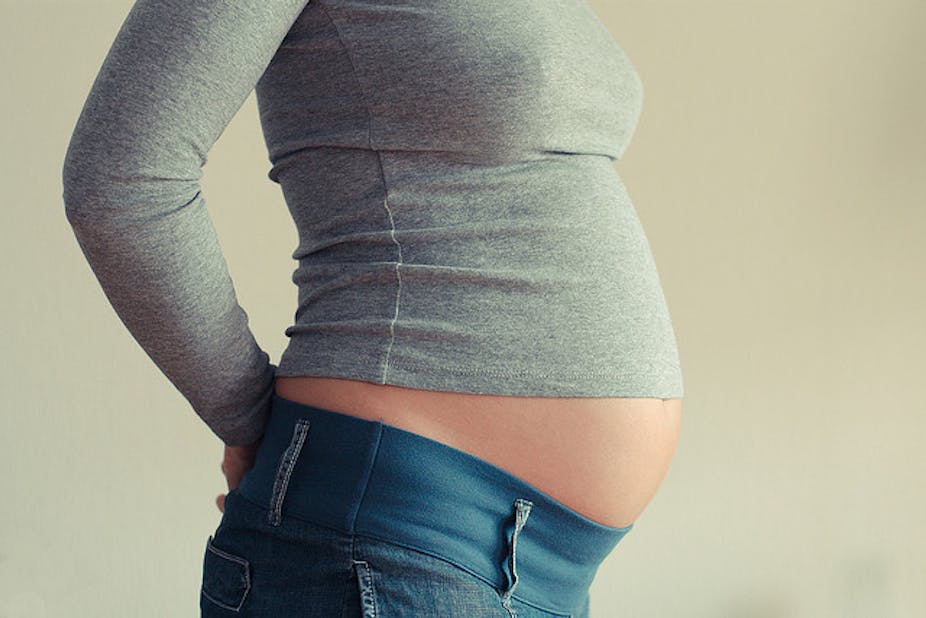Leafing through the popular press it’s easy to see that the baby industry is big business: designer labels in size 000; prams that deftly allow running parents to take baby along and pick up a single origin soy latte on the way; endless programs for developing musical ability; nursery décor that makes Grand Designs look positively pedestrian.
Design has permeated pregnancy, babies and all that that entails. And if it floats your boat, why not? We live in a time and in a nation that values – indeed enshrines – free choice.
But what if baby design starts earlier? What if we chose to manipulate the genetic make up of our children before they were born?
Of course this is already possible to some degree and is happening in clinics and laboratories all over the world through reproductive technologies. Embryos found to have genes associated with disabilities are already discarded. Sex-linked conditions remove all babies of the implicated sex from the pool of possible implants.
For the couples concerned this is entirely understandable. We all want our baby to be perfect, or at least the best baby we can possible have.
But what does this mean on a global scale? And what if we move beyond addressing serious medical conditions to determining those other physical characteristics we want in our babies?

This is a serious discussion that needs to be had, before technology overtakes our capacity to think through the long-term implications of designing babies for such traits as eye colour, sex or sporting ability.
Currently, any options for medical genetic intervention are the domain of the wealthy, so the impact is perhaps not yet significant. It’s hard to imagine such choices being made available to mothers in the refugee camps of Indonesia or the Kibera slum in Kenya or for thousands of parents in Australia similarly in the public system. But there are long-term consequences along class and economic lines which are yet to be explored.
What can we learn from history?
Designing future generations is as old as civilisation. Whole dynasties rested upon the selection of the right and proper partners to carry on royal lineages, sometimes with quite imperfect results. Humans have always selected life partners, either consciously or unconsciously, based on certain characteristics that are deemed desirable.
A more recent example of “designing practices” on a large scale is China’s one child policy. This was launched, with good intentions, to address a burgeoning population problem.
But now in its second generation, the policy has seen millions of only children who have no aunts, no uncles and no cousins, each with four doting grandparents. Male children were preferred and couples were allowed to have second child only if their first was a girl.
Today a number of social problems remain. It’s estimated there are six million undocumented children in China. Most of them are believed to be girls. Older grandparents now in failing health have no informal family supports and only children have enormous pressures to fulfil family obligations.
As The Economist has noted, once the supertanker of demography has gained steam, it takes decades to turn it around.

Choosing the genetic makeup of your child before birth also removes serendipity from the equation. The child becomes the product of designing parents who might determine they should be taller or blonder when they would have been a little shorter and brunette.
Harvard University professor Michael Sandel argues that this kind of hubristic motivation for genetic enhancements is deeply problematic and raises questions about the nature of parent-child relationships. He suggests that parents driven to enhance their children may be more likely to seek mastery over the mystery of birth and to express attitudes at odds with the norm of unconditional love.
Genetic modification, for treating illness such as gene therapy to reduce muscular dystrophy, however, may be obligatory. The real question is where we draw the line. Is it to eradicate a predisposition to a chronic disease later in life? Or remove genes for fair skin in tropical climates? And when do we cross from medical modification into the territory of aesthetic enhancement?
How do ordinary parents make these choices? For the most part we rely heavily on those in the clinics and hospitals.
Parents allegedly have choice about whether they continue with the pregnancy when an abnormality is detected. And the vast majority of parents do decide to terminate. But is it a constrained choice, offered to women caught up in a highly charged emotional situation who want to “do the right thing”.
As disability researcher and advocate Lisa Bridle explains about testing for disability:
“Testing is already presented as not only benign and unproblematic, but also as fulfilling responsible pregnant behaviour. Alongside the construction of prenatal testing as ‘beneficial medical advance’ and the commercial drives to expand testing options, disability continues to be constructed in wholly negative and prejudicial ways.”
Understanding these issues requires a wider and deeper engagement with the citizenry. How can ordinary people grapple with the science, the technologies and most importantly the longer term consequences of a particular path?
Importantly, and as a start, prospective parents need more opportunities for an open a full discussion on the ethics, science and longer term consequences of these technologies as they are developed.
Far from being settled, the social and ethical issues of genetic enhancement and modification are in desperate need of more exposure and discussion.
Lesley Chenoweth will argue against the concept of designer babies at the Intelligence Squared public debate in Sydney tonight.

